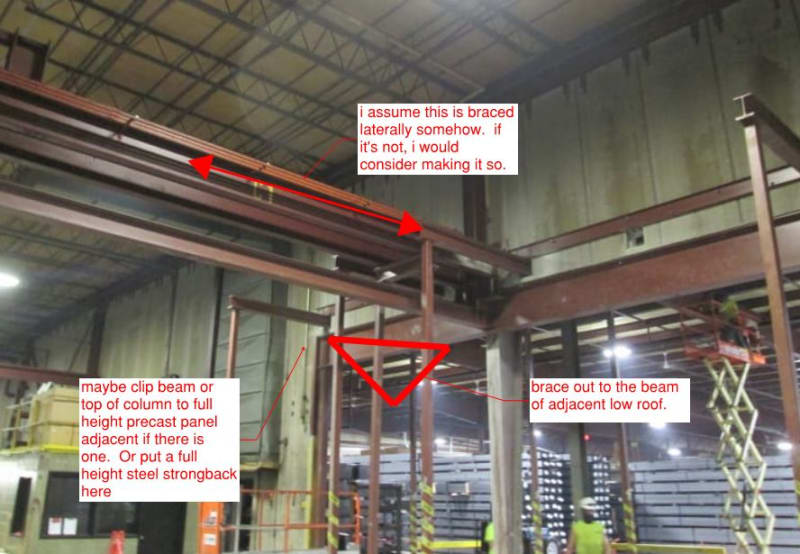What is the lateral brace force at the end of a beam that is simply supported. Take for example cutting in a new opening in a wall that only has dead weight (CMU or Precast). A new steel beam is placed over the top of columns on each end for a steel frame in the opening. What is the required lateral force (out of plane resistance) at the beam end. I would say that beam is unbraced laterally since the CMU wall in this is example is only providing gravity loading. With that being said, using Appendix 6 of AISC 13th, the lateral bracing force for nodal bracing does not seem like the right approach to take. Any input would be appreciated.
Tek-Tips is the largest IT community on the Internet today!
Members share and learn making Tek-Tips Forums the best source of peer-reviewed technical information on the Internet!
-
Congratulations cowski on being selected by the Eng-Tips community for having the most helpful posts in the forums last week. Way to Go!
Beam Lateral Bracing (at simply supported ends)
- Thread starter pioneer09
- Start date

